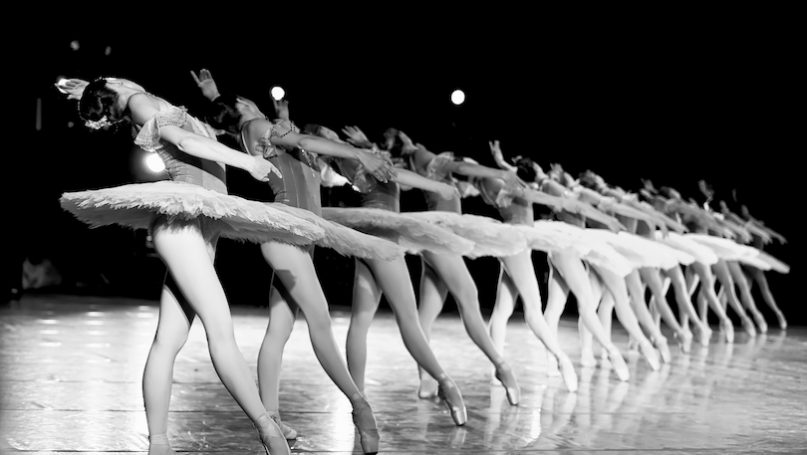
Russia has utilized ballet in its foreign policy goals for more than a century, and it has become an integral part of the country’s cultural diplomacy, as well an instrument to promote international dialogue and build bridges. Among the gifts that Russian culture gave to the world, the legacy of the Russian ballet has a significant role. The cultural interactions between Russia and European countries (primarily France and Italy) resulted in the emergence of an academic school that was internationally recognized by the end of the 19th century. “Swan lake”, a ballet created by P.I. Tchaikovsky in 1877, transformed the form of ballet music. A significant role in the development of ballets worldwide belonged to Russian choreographers A. Vaganova, M. Petipa, L. Ivanov, M Fokine.
After the success of the exhibition of Russian artists during the Paris Autumn Salon in 1906, Russian choreographer Serge Diaghilev, under the patronage of the imperial court of Russia and influential persons in the secular circles of France, began organizing Russian seasons. These were annual tours of Russian artists through Paris. In 1907, Anna Pavlova and Adolph Bolm headed a small troupe of twenty artists for tours abroad. Diaghilev’s Russian Seasons, which took place from 1906 to 1929 in Europe and America – especially the first ones, and which included the ballets The Firebird, Petruska and The Rite of Spring – made a great contribution to the development of world ballet and opera. These seasons popularized Russian culture abroad and contributed to popularity of Russian fashion – even the wife of King George VI of Great Britain got married in a dress that paraphrased Russian folklore traditions.
After the period of the Revolution and Civil War, many Russian ballet stars, choreographers and composers were in exile – from Anna Pavlova to Sergei Rachmaninoff. Still, classical ballet traditions in Russia were alive and waiting for the chance to be told to the world and be used as a cultural diplomacy tool.
In 1935, Serge Lifar, the head of the Opera de Paris ballet company invited a star from the mysterious Soviet Russia by sending a letter to world known choreographer Agrippina Vaganova (after whom, in 1957, the main Russian ballet school would be named), who was then living in Leningrad. Vaganova recommended the talented ballerina Marina Semenova, who was married to the deputy Minister of foreign affairs Lev Karakhan. In Paris, Semenova danced Chopiniana, Giselle and Swan Lake. Both the French and the Russian émigrés were getting ready to see the red commissar who walked with a Mauser. Instead, they were visited by a “young, pretty, shy woman” who drank only champagne, spoke good French, but most importantly, danced amazingly. The success could be seen when sensitive Parisians wiped away their tears during the scene of Giselle’s madness. Through her performances, Semenova developed a relationship with the French public and her tour was one of the first ballet diplomacy initiatives of Soviet Union.
In 1956, the Bolshoi Theater went on a foreign tour for the first time thanks to Khrushchev’s official visit to Great Britain. The premiere of Romeo and Juliet was attended by celebrities such as Laurence Olivier, Vivien Leigh and Margot Fontaine. The expectations of the London audience were fully met and their standing ovation lasted 90 minutes. To say that the Bolshoi Theater troupe in London were triumphant is to say nothing. The Soviet ballet, which carefully preserved and multiplied the traditions of Diaghilev’s “seasons”, became a true sensation of its time, rediscovering the richness of this cultural tradition as it astonished foreigners. Former prima ballerina of the Mariinsky Theater Matilda Kseshinskaya wrote about this with pride: “- I cried with happiness … I recognized the old ballet. It was the same ballet that I had not seen in over 40 years. The soul remained, the tradition is alive and continuing …” Soviet ballet stars Ulanova and Plisetskaya gave performances in Rome, London and New York, and witnessed the worship of kings and presidents alike with their world fame. Moscow had become the “ballet capital” of the world. Even “move to the West” of Alexander Godunov, Rudolf Nureyev, Mikhail Baryshnikov were contributing towards international interest to Russian ballet.
Nowadays, Russia is one of the few countries where ballet traditions have been carefully preserved and developed. Russia currently hosts various ballet festivals and competitions in Moscow and Saint Petersburg – Dance Open, Vaganova Prix, Dance Inversion, Context, Kremlin Gala, Benois de la danse, Baletomania, Moscow Summer Seasons, International Ballet competition and the International Nuriyev festival in Kazan and Ufa to name them. In 2006, the directors of the twelve most significant and authoritative international ballet competitions established the International Federation of Ballet Competitions and turned to the outstanding choreographer of the Bolshoi Theater of Russia, Yuriy Grigorovich, to head organization as its President. In 2013, it became a member of the UNESCO International Dance Council and currently it fosters international cultural dialogue.
Like any instrument, ballet diplomacy has its limitations. At times, Russia uses cultural diplomacy too actively and disregards the tastes of the target audience and opportunities to use other public diplomacy instruments. Ballet diplomacy cannot build trust at once in an atmosphere of mistrust. But the peoples of the world invariably feel the need to supplement their own cultural traditions with the values of other peoples. The distinctive features of Russian ballet are spirituality, meaningfulness, expressiveness and traditionalism and these features are relative to the image of Russia that is being promoted both by official diplomacy and ballet diplomacy.
Further Reading on E-International Relations
- National Imprint in IR Theory: The Global and the Exceptional of the ‘Russian Idea’
- Ukraine and the Russian Challenge to the European Order
- The Dynamics of Sino-Russian Relations in Central Asia
- Opinion – Putin’s Obsession with Ukraine as a ‘Russian Land’
- Responses From Central Asian States to the Russian Invasion of Ukraine
- Expecting the Expected: Russian Presidential Elections 2018